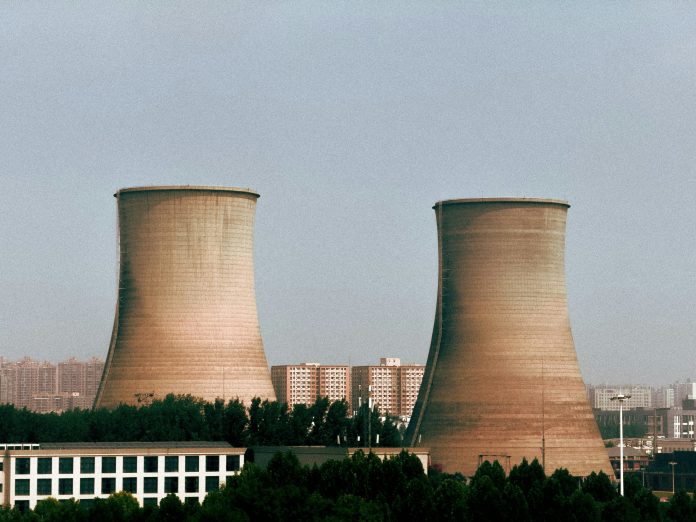Last week, the United States and the United Kingdom announced a series of commercial partnerships and investment projects, including a new strategic alliance in civil nuclear energy: the Atlantic Partnership for Advanced Nuclear Energy. Among the collaborations, American modular reactor designer X-Energy and British utility Centrica plan to deploy 12 advanced modular reactors (AMRs) in the UK, totaling 960 MW of capacity. The UK government aims to quadruple its nuclear capacity from 6 GW today to 24 GW by 2050.
In Europe, the transition to low-carbon energy—driven by wind and solar—is hampered by high costs and intermittency. The electricity market is under strain, stifling economic growth. Since 2022, a supply shock has worsened the imbalance, triggered by soaring gas prices due to the war in Ukraine, rising interest rates that penalize renewables, and reduced subsidies as governments prioritize defense spending.
Across the Atlantic, the electricity market is also under pressure, but from surging demand—particularly from data centers. By 2028, data centers could account for 12% of total U.S. electricity consumption, up from 4.4% in 2023. Historically, electricity demand tracked industrial growth—heavy manufacturing, transport, HVAC—but now, the rise of immaterial services like chatbots, generative AI, and autonomous robotics marks a major economic shift.
Modern data centers are voracious consumers of power, with some requiring up to 1 GW—ten times more than typical data centers. While high electricity prices hinder growth in Europe, the U.S. is taking proactive steps to ensure energy remains abundant. Despite rising market prices, data center operators continue investing, confident that AI-driven value creation will offset energy costs. Still, the U.S. government and industry are planning ahead to contain electricity prices and protect the broader economy. In May 2025, the Trump administration signed several executive orders to accelerate nuclear development.
Three categories of companies stand out in the electricity sector. Independent power producers like Constellation Energy and Vistra, which operate traditional gas and nuclear plants. Modular reactor developers, including listed startups like Oklo and NuScale, private firms like X-Energy, Kairos Power, and Newcleo, and conglomerates such as Rolls-Royce. Nuclear supply chain players like Cameco (uranium), Centrus Energy (centrifuges), and BWX Technologies (civil and defense nuclear equipment).
- AI’s Electricity Footprint
On August 21, 2025, Google revealed that a median AI prompt on Gemini consumes 0.24 Wh—roughly the energy of running a microwave for one second. The breakdown: 58% from the TPU accelerator, 25% from the CPU, and 17% from backup systems and cooling. While image generation and AI training are more energy-intensive, Gemini’s median prompt in May 2025 was 33 times more efficient than a year earlier, thanks to model, software, and processor improvements.
New data centers under construction may consume up to 1 GW, and energy efficiency gains are quickly reinvested into expanding capacity.
- Utilities Capitalize on the Boom
Between 2005 and 2020, U.S. electricity consumption barely grew. But from 2020 to 2026, it’s projected to rise 1.7% annually, driven mainly by the commercial sector—including data centers. According to the EIA, this sector will add 200 billion kWh, compared to 125 billion kWh from industry. That’s equivalent to 37 continuously operating 1 GW power plants.
BCG forecasts data centers will consume 335–390 billion kWh by 2030 (7.5% of U.S. electricity), up from 126 billion kWh in 2022 (2.5%). Deloitte estimates they’ll require 176 GW of capacity by 2035.
Independent utilities with competitive production costs and access to market pricing are thriving. Vistra and Constellation Energy, the two largest independent nuclear operators, are prime examples. To meet future demand, utilities are signing long-term contracts with guaranteed purchase volumes. For instance, Entergy and Meta agreed to build three gas plants totaling 2.26 GW for a $10 billion data center in Louisiana. Meta prepaid for turbines and grid access and committed to minimum payments over 15 years.
- SMRs : a Breakthrough in Nuclear Technology
Small Modular Reactors (SMRs) are compact nuclear units assembled in factories. Similar reactors have long powered nuclear submarines and Russian icebreakers. France’s Triomphant-class submarine, for example, uses a 150 MW reactor. Today, two SMRs are operational—in China and the Russian Arctic.
SMRs promise lower costs, faster deployment, and fewer uncertainties than large-scale reactors like the 1.6 GW EPRs, which have faced massive overruns (e.g., Flamanville: €24 billion vs. €3 billion estimate; Hinkley Point: £50 billion; Vogtle: $37 billion over 15 years). However, SMRs require decentralized fuel logistics and high-volume manufacturing to offset lost economies of scale.
NuScale, founded in 2007, has invested $1.8 billion in its 77 MW Power Module—the first and only SMR certified by the U.S. Nuclear Regulatory Commission. It’s one of 50 SMR designs in development. Other players include Oklo (NYSE-listed), X-Energy, and Kairos Power, backed by top U.S. tech investors. In Europe, Rolls-Royce is developing a 470 MW SMR, though the unit isn’t yet revenue-generating.
Investing solely in companies whose success hinges on commercial SMR deployment remains very risky. However, backing established utilities or conglomerates that benefit from current trends and are developing or planning to operate SMRs could be a smart move. Still, investors should remember that electricity remains a commodity in a capital-intensive sector, heavily regulated sector with national security implications.



